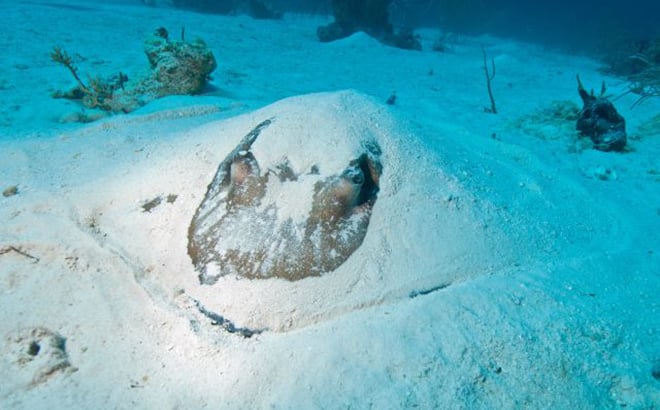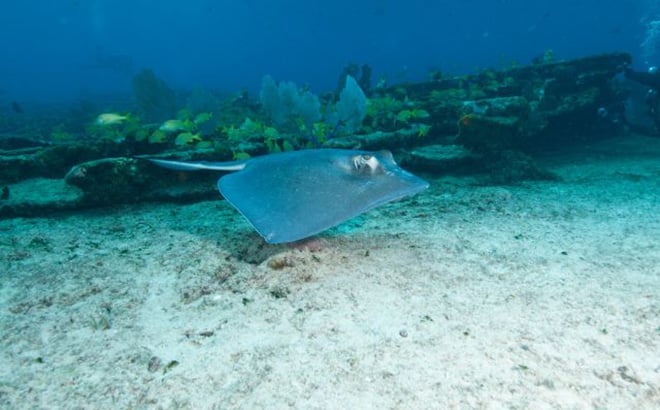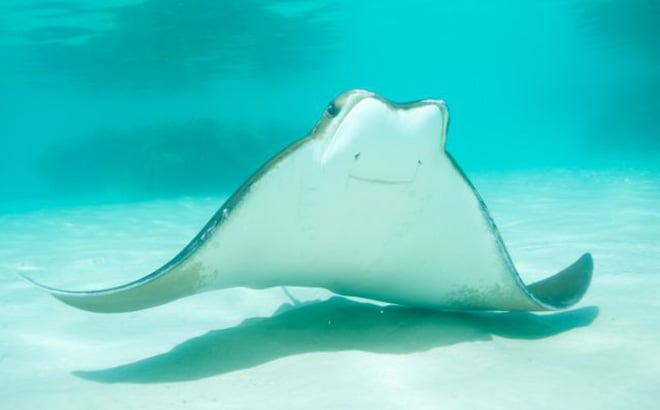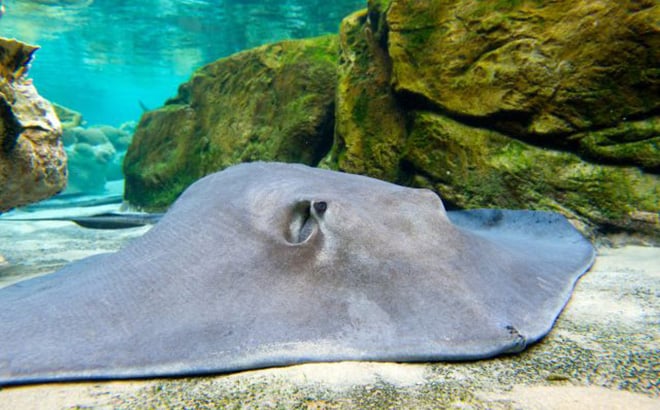Stingray Diet Facts
What's On the Stingray's Menu?

Stingrays are purely carnivorous and, like most carnivores, they like to eat animals smaller than themselves. They like to eat animals that live on or beneath the sand like clams, oysters, snails, and shrimp. A la carte for stingrays is small fish and squid.
Buried in the Sand

Stingrays have a flattened body shape, making it easy to nestle on the ocean floor. They do so by tossing sand on top of themselves for camouflage and protection from predators. Their mouths are located under their body, so when they skim the ocean floor it’s easier to gobble-up shrimp and clams. Along with the sandy prey, stingrays will vacuum up any dead matter (aka ocean leftovers) they come across.
Nothing to Sea

While their mouths are on their undersides, most species of stingrays have eyes located on top of their bodies. This leaves stingrays vulnerable to anything beneath them, which probably explains why they spend so much time near the ocean floor. What their eyes can’t see, they make up for with a complex sensory system called the Ampullae of Lorenzini. This system helps them pick up on faint electrical signals released by their prey, wherever they may be swimming or crawling in the sand.
Built to Crunch

Stingrays are cartilaginous, meaning they have no bones in their body, which makes what their jaws can do even more extraordinary. To crush the shells of crabs, clams, sea snails, and other mollusks, stingrays need serious chomping power! This makes stingrays’ jaws a crushing combination of strength and lightweight maneuverability.
What Eats Stingrays?

Let’s look at where stingrays fall within the complex hierarchy of the ocean food chain. Animals known to feed on stingrays include sharks, elephant seals, and killer whales. The best defense a stingray has is its flat body, which makes it perfect for hiding in the sand on the ocean floor. If all else fails, they can utilize the natural weapon that gave them their name. Most species of stingrays are equipped with—you guessed it—a barb attached to a long, whip-like tail which they can use to "sting" when they feel threatened.
Where to See Stingrays
Now that you’ve filled up on stingray diet facts, why not visit Stingray Lagoon at SeaWorld Orlando? Our stingrays love to surface from their sandy hiding spots and swim beneath your fingertips.


